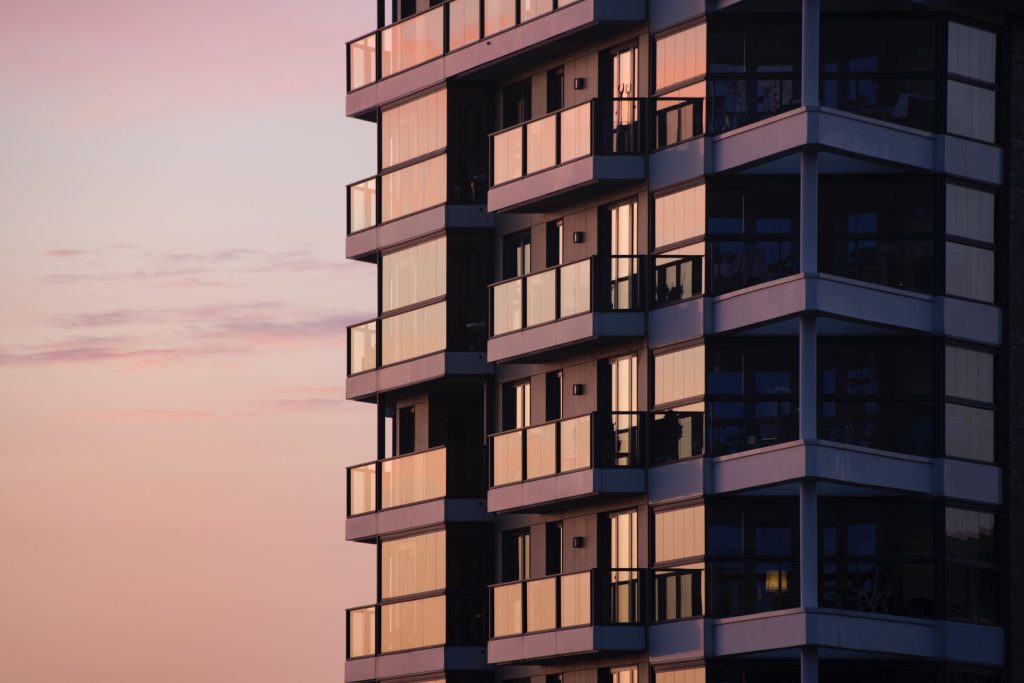
It wasn’t so very long ago that the Australian dream was to own a quarter acre block in the suburbs with a Hills Hoist in the backyard. Most people had reasonable expectations that they would one day be able to own their own home. Apartments were for investors and young trendy professionals living in cities close to their work and play. This housing profile is now no longer true and particularly so in NSW. Rising mortgage rates, the cost-of-living crisis and changing demographics have apartment living very much on the rise.
The state of NSW is in the middle of a housing crisis with Premier Chris Minns moving to build the cities up not out, referring to the push for higher density apartment dwellings. He is prepared to relax local building height restrictions and prioritise infrastructure in order to make it happen. It’s becoming increasingly more likely that low to middle income households will be buying into apartments rather than stand-alone homes due to affordability issues.
Owning an apartment, townhouse or villa is different to owning a house. The primary difference is that the building or group of buildings have been divided into lots and you have shared ownership and liability of the common areas, buildings and facilities – this is called a strata. Before you purchase, it is imperative that you obtain a detailed strata report in order to assess your ongoing financial commitments and liabilities, as well as information on the condition of the buildings and grounds and how well the strata runs.
When you purchase within a strata scheme you will pay quarterly strata levies that are used to maintain the buildings and common areas including grounds and gardens, pools, gyms and any space that the community as a whole can utilise. The amount that you pay will depend on various factors such as the age and size of the building, how much repair and maintenance work is required and the type and number of facilities.
What is a Strata Report?
A strata report is compiled by a professional strata inspection company and contains vital information for potential buyers, owners, or investors. It should include a history of the building, the financial status of the strata scheme, any building works past, present and future as well as all expenses for the past two years. There should also be a ten-year capital works plan which is required to be updated every five years.
What to look for:
Financial & Insurance Information: It’s important for the strata scheme to have a healthy bank balance so that unexpected costs can be covered. If there are insufficient funds for any works that are required, owners can be forced to pay additional fees via special levies which may be an unpleasant surprise. The report should clearly state details of the sinking, administrative and capital works funds as well as any upcoming expenses. In addition, to assess potential risks and liabilities, check the insurance to ensure that it is current, that it matches the valuation and what the exclusions are.
Strata Management: Take a close look at the minutes of the strata committee meetings, as they will provide you with essential information about how well the committee is run, how proactive they are, and how well they deal with problems that arise. Ensure that all documentation complies with current legislation.
By-laws and Regulations: There should be rules and regulations that govern the property and that should be adhered to by all owners and tenants. You need to be certain that these fit in with the lifestyle that you would like to live, as the rules can pertain to pet ownership, noise, parking, smoking, renovations, even what colour you can paint your door.
Capital Works Fund and Maintenance: The Capital Works Fund plan is for ten years and has to be reviewed every five years. This will give you a good indication of financial commitments the strata scheme is likely to be liable for in the near future and what sort of condition the building is in. Assess whether or not there are any ongoing defect issues and what the maintenance planning is like. Consider the disruption any potential works can have such as noise, contractor movements and interruptions in the use of facilities.
Issues and Disputes: The report should detail any ongoing disputes or legal matters. The committee meeting minutes should also provide some insight into whether or not there are any ongoing or regular disputes. Review email and written correspondence to see how these issues and disputes are handled and how well resolved they are.
Special Levies: Check if there are, or have been, special levies imposed on owners for particular requirements. Are they ongoing or one off? What can you expect in the future?
Common Property: The report should list all the common areas, facilities, amenities and property that is available to residents in the complex.
Strata Certification and Records: You should sight a copy of the strata certificate and all other relevant documents.
So, there you have it, what to look out for in your strata report. Don’t ignore any red flags no matter how much you love the property. Being diligent before you purchase can make all the difference in the long term, potentially saving you a lot of money and heartache. Well run strata schemes can provide access to more than you could afford and better-quality facilities if you owned your own house. If you’re not sure how any of this works, reach out to our expert team who are only too happy to assist you.

